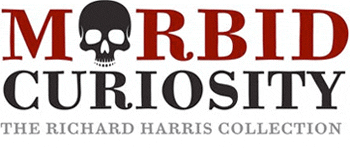
featuring Death March by Hugo Crosthwaite,
a site specific mural commissioned by Richard Harris
a site specific mural commissioned by Richard Harris
28 January - 8 July 2012
Curated by Lucas Antony Cowan & Debra L. Purden,
Visual Arts Department of the Chicago Office of Tourism & Culture
Chicago Cultural Center, Illinois, USA
Curated by Lucas Antony Cowan & Debra L. Purden,
Visual Arts Department of the Chicago Office of Tourism & Culture
Chicago Cultural Center, Illinois, USA
Death March: Artist Statement
This work is a death march in the tradition of funerary marches where family, friends and general onlookers follow the deceased to their final resting place. At first glance, the drawing has the appearance of a festive occasion. There is a mass of characters, clumped together in groups, supporting and carrying effigies of death; puppets and floats that resemble a South American Carnival or a Mexican Day of the Dead procession. But with closer examination, these groups are a grotesque ensemble of human and monstrous figures that inflict death upon one another through war, rape, murder and disease. There is dark humor and contemplation over the concept of an afterlife, as all the characters march forward into what is an inevitable end.
The drawing references such works as Peter Bruegel’s “Triumph of Death”, engravings by Jose Guadalupe Posada of the Mexican Revolution and James Ensor’s, “Skeletons Fighting for the Body of a Hanged Man”.
Death March has a dual narrative layer. The bottom procession is the reality of death, suffering, turmoil and physical mortality. It also reflects on the nature of mourning and the fear of an existential void after death. The top, mystical and ethereal, is composed of puppets and death effigies. It presents the more abstract notion of death, the spiritual idea of an afterlife and the hope of reuniting with the dead.
This work is a death march in the tradition of funerary marches where family, friends and general onlookers follow the deceased to their final resting place. At first glance, the drawing has the appearance of a festive occasion. There is a mass of characters, clumped together in groups, supporting and carrying effigies of death; puppets and floats that resemble a South American Carnival or a Mexican Day of the Dead procession. But with closer examination, these groups are a grotesque ensemble of human and monstrous figures that inflict death upon one another through war, rape, murder and disease. There is dark humor and contemplation over the concept of an afterlife, as all the characters march forward into what is an inevitable end.
The drawing references such works as Peter Bruegel’s “Triumph of Death”, engravings by Jose Guadalupe Posada of the Mexican Revolution and James Ensor’s, “Skeletons Fighting for the Body of a Hanged Man”.
Death March has a dual narrative layer. The bottom procession is the reality of death, suffering, turmoil and physical mortality. It also reflects on the nature of mourning and the fear of an existential void after death. The top, mystical and ethereal, is composed of puppets and death effigies. It presents the more abstract notion of death, the spiritual idea of an afterlife and the hope of reuniting with the dead.

Exhibition Details
read complete press releasedownload complete press release (pdf)
Morbid Curiosity: The Richard Harris Collection includes a wild and wonderfully eclectic selection of nearly 1,000 works of fine art, artifacts, massive installations and decorative objects that explore the iconography of death across a variety of artistic, cultural and spiritual practices from 2000 B.C.E. to the present day.
“We are all born to die. The questions that fascinate me are how we will die, where will we die and when will we die,” said Richard Harris. “At the age of 74, I believe it is incumbent upon me to make my collection a paean to death in all its many visages.”
The two major components of this exhibition are the “War Room,” highlighting the atrocities of war in notable works from the 17th century to present day; and the “Kunstkammer of Death,” a modern-day “cabinet of curiosities,” featuring a wide-ranging survey of mortality across cultures and spiritual traditions. The centerpiece of the “War Room” is Mr. Harris’ rare collection of five great war series, featuring prints by Jacques Callot, Francisco Goya, Otto Dix, the Chapman Brothers and Sandow Birk, which he has acquired over the past 30 years. This exhibition marks the first time that all five series will be exhibited together in their entirety.
“Morbid Curiosity will fill two gallery spaces on the 4th floor to cover a total of 14,000 sq. ft. during its six-month run, making it one of our largest and longest-running exhibitions to date,” said Michelle T. Boone, Commissioner of the Chicago Department of Cultural Affairs and Special Events.
Additional exhibition highlights include:
• Works by notable artists including Rembrandt, Albrecht Dürer, Hans Bellmar, Odilon Redon, Pavel Tchelitchew, James Ensor, Jasper Johns and Robert Mapplethorpe.
• Breathtaking 13 ft. high chandelier made of 3,000 handcrafted plaster bones by contemporary British artist Jodie Carey. The piece directly engages the viewer with the irony or contradictions implicit in the decay/beauty aesthetic.
• Visually stunning large-scale installation, “Tribute,” from Guerra de la Paz entirely built from colorful used clothing that commemorates the Holocaust.
• Specimens, medical charts and ephemera.
• Work by contemporary artists such as Andres Serrano, Vik Muniz and Hugo Crosthwaite, including his commissioned 10 x 25 ft. site-specific mural, “Death March,” among others.
• Ethnographic artifacts and art from other cultures, particularly Tibet, Mexico, Africa and New Guinea.
download complete press release (pdf)